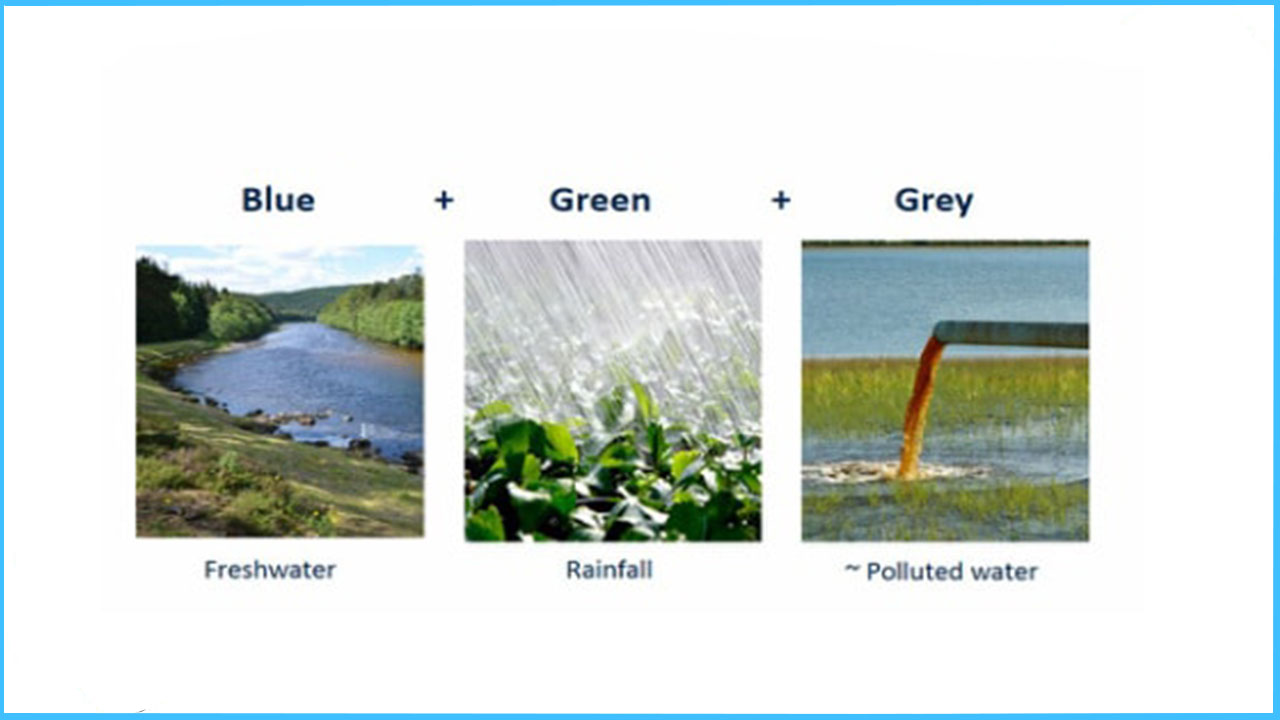The water embodied in items is known as virtual water. It consists of rainwater that has been transpired by the plant, irrigation water that has been added, and grey water that has been tainted by agrichemicals. When combined with soil physics modelling of both blue and green water flow in soils. Biophysical knowledge of green-water use by plants allows for the development of irrigation practices and policies to protect the natural capital stocks of our opportunity-rich blue-water resources that are used for irrigation. Leaching processes are being modelled, which is leading to techniques for minimizing grey water.
GREEN WATER
Green water is rainwater that has been stored in the soil and is transpired by the plant. The water in our surface and groundwater reservoirs is known as blue water. Blue water is extracted in irrigated crops to sustain transpiration. It's critical that it's used as efficiently as possible. The green water that falls from the sky or that has been supplemented by irrigation from blue-water reservoirs is stored in the soil.
GREY WATER
Grey water is polluted water that results from the leaching of nutrients and pesticides during production, such as in agriculture. The volume of grey water can be calculated by calculating the amount of blue water required to dilute the receiving water body to an acceptable quality standard.
WATER FOOTPRINT
The notion of water footprint was created in order to better global water management. The water footprint, whether it's for an individual, a community, or a business, is a measure of water consumption (direct and indirect), defined as the total volume of freshwater utilised to generate goods and services consumed by an individual, a community, or a business. Water consumption is measured in terms of the amount of water consumed, evaporated, and/or contaminated per unit of time.
3 ELEMENTS OF WATER FOOTPRINT
GREEN ELEMENT: The consumption of water contained in plants and soil in the form of moisture, which is not part of any surface or body of groundwater, is referred to as the green element. Rainwater is an example, as long as it does not stagnate in the soil and may filter into the earth. In terms of saving the blue element, this element also incorporates the value of non-irrigated agriculture.
BLUE ELEMENT: The consumption of surface water resources and groundwater along a product's production chain is shown by the blue element. It refers to the volume of water utilised, then evaporated or absorbed into a product that is not returned to the reservoir from which it was obtained, whether from surface or groundwater.
GREY ELEMENT: The grey element refers to water pollution and is defined as the volume of fresh water required to dilute the pollutant load generated by a specific process while maintaining the naturally present concentrations and quality criteria of the water from its original source.
CALCULATION OF WATER FOOTPRINT
Any well-defined group of consumers (e.g., an individual, family, village, city, county, state, or nation) or producers can have their water footprint determined (e.g. a public or private agency or an entire economic sector).
It's a spatially explicit indication that shows not just the amount of water consumed and contaminated, but also where it was consumed and polluted. The volume of freshwater used to make a product is measured at the location where the items were actually produced, and relates to the amount of water consumed at various stages of the manufacturing process.




